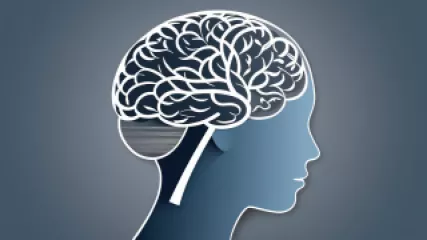Navigating Ethical Dilemmas: A Step-by-Step Guide for Mental Health Professionals
Navigating Ethical Dilemmas: A Step-by-Step Guide for Mental Health Professionals
As mental health professionals, we are often faced with complex ethical dilemmas that require careful consideration and decision-making. Whether it's a conflict between our personal values and professional obligations, a challenging situation involving a client's wellbeing, or a decision that could have far-reaching consequences, navigating these ethical waters can be a daunting task. However, by approaching these dilemmas with a structured framework and a commitment to ethical principles, we can find our way through even the most challenging scenarios.
In this comprehensive guide, we will explore a step-by-step process for addressing ethical dilemmas in the mental health field. From identifying the key issues at hand to weighing the potential consequences and seeking guidance from relevant ethical codes and guidelines, we will equip you with the tools and strategies necessary to make informed and ethical decisions that prioritize the wellbeing of your clients and uphold the integrity of the profession.
Step 1: Recognize the Ethical Dilemma
The first step in navigating an ethical dilemma is to clearly identify the ethical issues at hand. This may involve considering multiple perspectives, exploring the potential conflicts between personal values, professional obligations, and client needs, and examining the potential consequences of different courses of action.
One common ethical dilemma that mental health professionals may face is the conflict between client confidentiality and the need to protect the safety of the client or others. For example, if a client discloses plans to harm themselves or someone else, the mental health professional must weigh the ethical principle of respecting the client's privacy and autonomy against the obligation to prevent harm and protect the wellbeing of the client and others.
Another example of an ethical dilemma in the mental health field might involve a client's request for a specific treatment or intervention that the mental health professional believes may not be in the client's best interest. In this case, the professional must balance the client's right to self-determination and informed consent with their own professional judgment and ethical responsibility to provide the most appropriate and effective care.
Step 2: Gather Relevant Information
Once you have identified the ethical dilemma, the next step is to gather as much relevant information as possible. This may involve reviewing the client's history, consulting with colleagues, and examining any applicable ethical codes, laws, or organizational policies that may inform the decision-making process.
It's important to gather a comprehensive understanding of the situation, including the perspectives and needs of all parties involved, the potential risks and benefits of different courses of action, and any relevant contextual factors that may influence the ethical considerations.
In the case of the confidentiality dilemma mentioned earlier, for example, the mental health professional might need to gather information about the client's mental health history, the specific nature of the threat, the potential risk to the client or others, and any applicable laws or organizational policies regarding mandatory reporting or duty to warn.
Step 3: Consult Relevant Ethical Codes and Guidelines
As mental health professionals, we have a responsibility to uphold the ethical principles and standards set forth by our respective professional organizations. These ethical codes and guidelines can serve as valuable resources in navigating complex ethical dilemmas, providing a framework for decision-making and helping us to ensure that our actions are consistent with the core values of the profession.
For instance, the American Psychological Association's Ethical Principles of Psychologists and Code of Conduct outlines key principles such as Beneficence and Nonmaleficence, Fidelity and Responsibility, Integrity, and Justice, which can guide us in weighing the ethical considerations and potential consequences of our decisions.
Similarly, the National Association of Social Workers' Code of Ethics emphasizes the importance of respecting the inherent dignity and worth of the person, promoting social justice, and maintaining the integrity of the profession. By carefully examining these ethical guidelines and principles, mental health professionals can gain valuable insight into the ethical dimensions of the dilemma and develop a more informed and principled approach to decision-making.
Step 4: Consider Alternative Courses of Action
Once you have gathered the necessary information and consulted the relevant ethical codes and guidelines, the next step is to consider the various courses of action available to you. This may involve brainstorming possible solutions, weighing the potential consequences of each option, and identifying the potential risks and benefits associated with each approach.
In the case of the confidentiality dilemma, for example, the mental health professional might consider the following options:
- Maintaining strict confidentiality and not disclosing the client's plans to harm themselves or others.
- Disclosing the information to the appropriate authorities or other relevant parties in order to prevent harm.
- Exploring alternative strategies, such as working with the client to develop a safety plan or involving the client's support system, that could mitigate the risk without breaching confidentiality.
By carefully considering the various options and their potential consequences, the mental health professional can begin to identify the most ethically sound course of action that best balances the competing principles and obligations at play.
Step 5: Seek Guidance and Consult with Colleagues
While the ultimate decision-making responsibility rests with the mental health professional, it can be invaluable to seek guidance and input from colleagues, supervisors, or other trusted sources. Consulting with others who have experience navigating similar ethical dilemmas can provide valuable insights, alternative perspectives, and additional considerations that might not have been readily apparent.
For example, the mental health professional facing the confidentiality dilemma might consult with a supervisor or a trusted colleague in the field to discuss the various options, explore the potential implications of each course of action, and receive feedback and guidance on the most ethically sound approach.
By engaging in this collaborative process, the mental health professional can gain a deeper understanding of the ethical issues at hand, identify potential blind spots or biases in their own decision-making, and develop a more informed and well-rounded approach to addressing the dilemma.
Step 6: Make a Decision and Implement the Plan
After carefully considering all the relevant information, ethical principles, and alternative courses of action, the final step is to make a decision and implement the chosen course of action. This decision should be made with a clear understanding of the potential consequences and a commitment to upholding the ethical standards of the profession.
In the case of the confidentiality dilemma, the mental health professional might decide to disclose the client's plans to the appropriate authorities, while also working with the client to develop a comprehensive safety plan and continuing to provide supportive and compassionate care. This decision would be made with the understanding that it may potentially damage the therapeutic relationship and the client's trust, but that the overriding ethical obligation to prevent harm takes precedence.
Regardless of the specific decision made, it is crucial that the mental health professional document the decision-making process, the rationale behind the chosen course of action, and the steps taken to implement the plan. This documentation not only serves as a record of the professional's ethical reasoning but can also provide valuable guidance for future decision-making and help to ensure accountability and transparency in the event of any future inquiries or reviews.
Conclusion: Embracing Ethical Decision-Making as a Lifelong Journey
Navigating ethical dilemmas in the mental health field is a complex and ongoing challenge that requires a combination of ethical knowledge, critical thinking, and a deep commitment to the wellbeing of clients and the integrity of the profession. By following the step-by-step process outlined in this guide, mental health professionals can develop a structured and principled approach to decision-making that helps to ensure that their actions are consistent with the ethical standards of the field.
However, it's important to recognize that ethical decision-making is not a one-time event, but rather a lifelong journey of continuous learning, self-reflection, and adaptation. As the field of mental health evolves and the ethical landscape shifts, mental health professionals must remain vigilant, stay informed of changes in ethical codes and guidelines, and be willing to engage in ongoing dialogues with colleagues and supervisors to ensure that they are consistently upholding the highest ethical standards.
By embracing this commitment to ethical decision-making, mental health professionals can not only navigate the complex ethical dilemmas they are likely to face, but also contribute to the ongoing development and refinement of ethical practices within the field. In doing so, they can help to ensure that the mental health profession continues to fulfill its essential role in promoting the wellbeing and dignity of those it serves.
Key Takeaways
- Ethical dilemmas in the mental health field often involve complex situations that require careful consideration of competing principles and obligations.
- A structured, step-by-step approach to ethical decision-making can help mental health professionals navigate these challenges and make informed, principled decisions.
- Key steps include recognizing the ethical dilemma, gathering relevant information, consulting ethical codes and guidelines, considering alternative courses of action, seeking guidance from colleagues, and implementing a well-documented decision.
- Embracing ethical decision-making as a lifelong journey is essential for mental health professionals, as the ethical landscape continues to evolve and new challenges emerge.
- By upholding the highest ethical standards, mental health professionals can contribute to the integrity and effectiveness of the profession while prioritizing the wellbeing of their clients.
About the Author
Mason Mendoza is a licensed clinical psychologist and ethics consultant with over 15 years of experience in the mental health field. He is known for his expertise in navigating complex ethical dilemmas and has published extensively on the topic of ethical decision-making in the mental health profession. Mendoza is a frequent speaker and trainer on ethics in mental health, and he serves on the ethics committee for the American Psychological Association.






